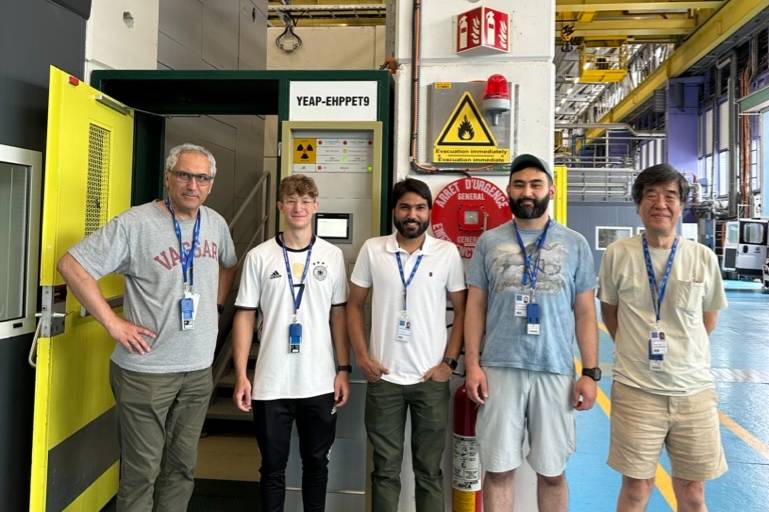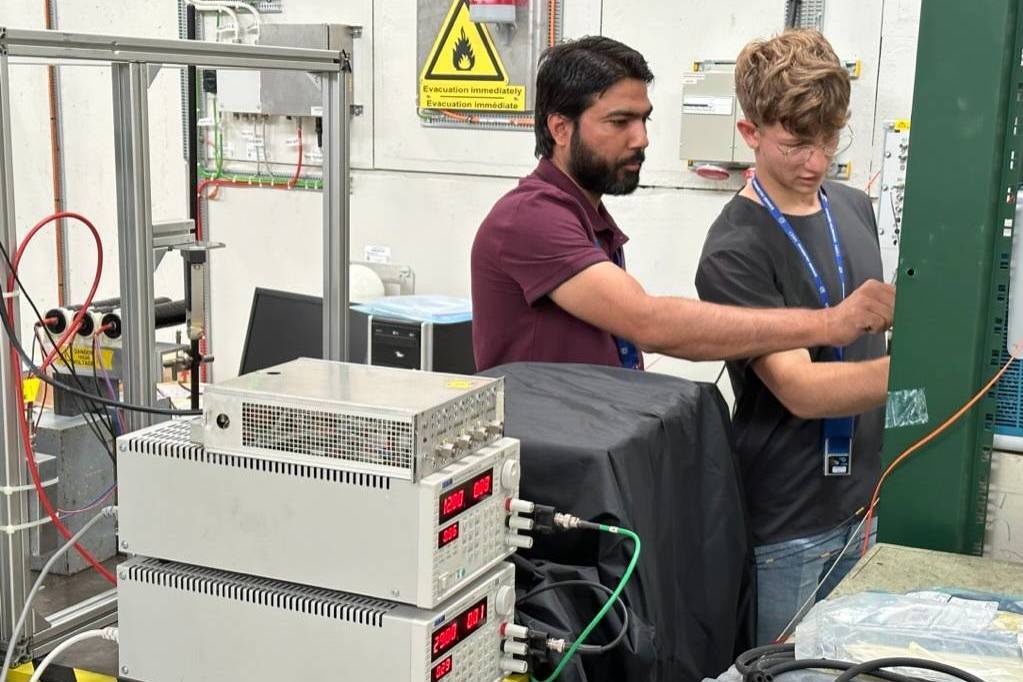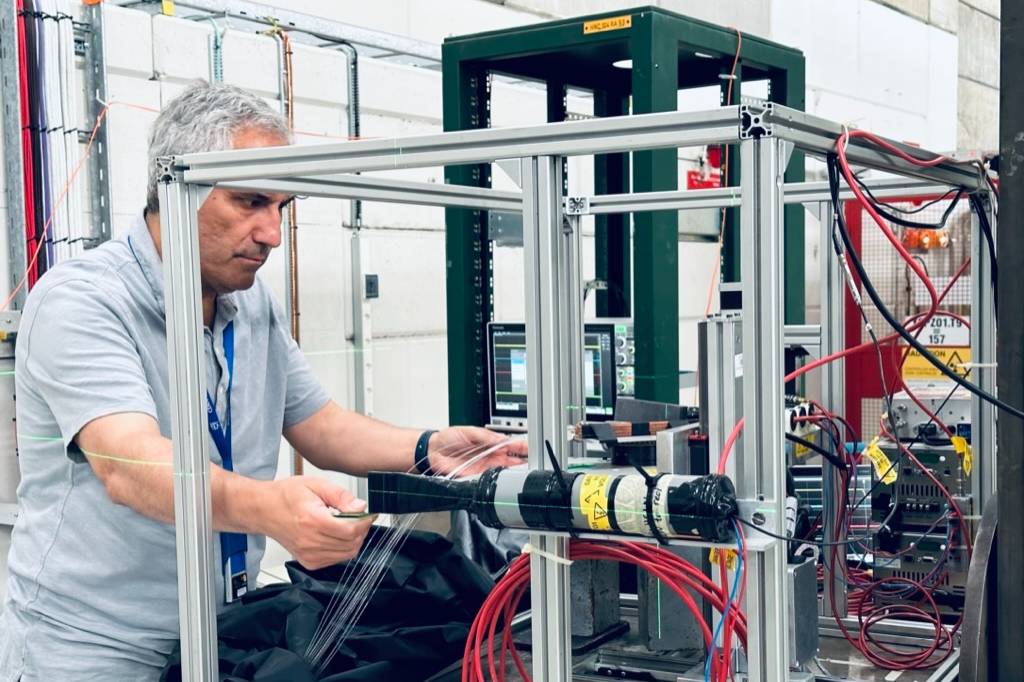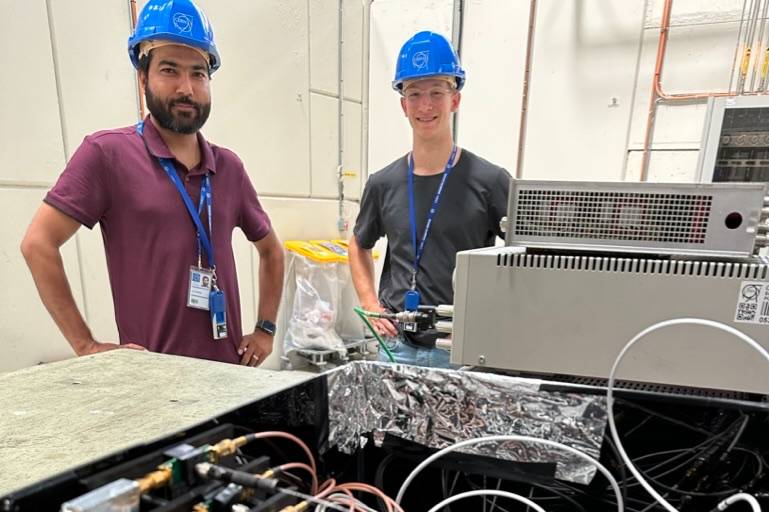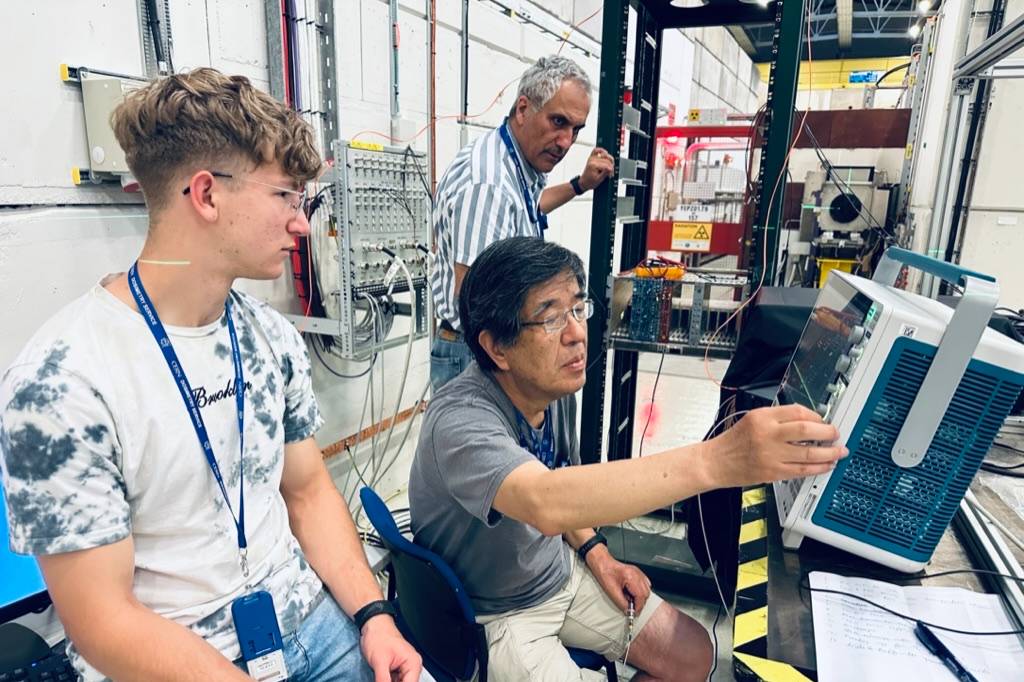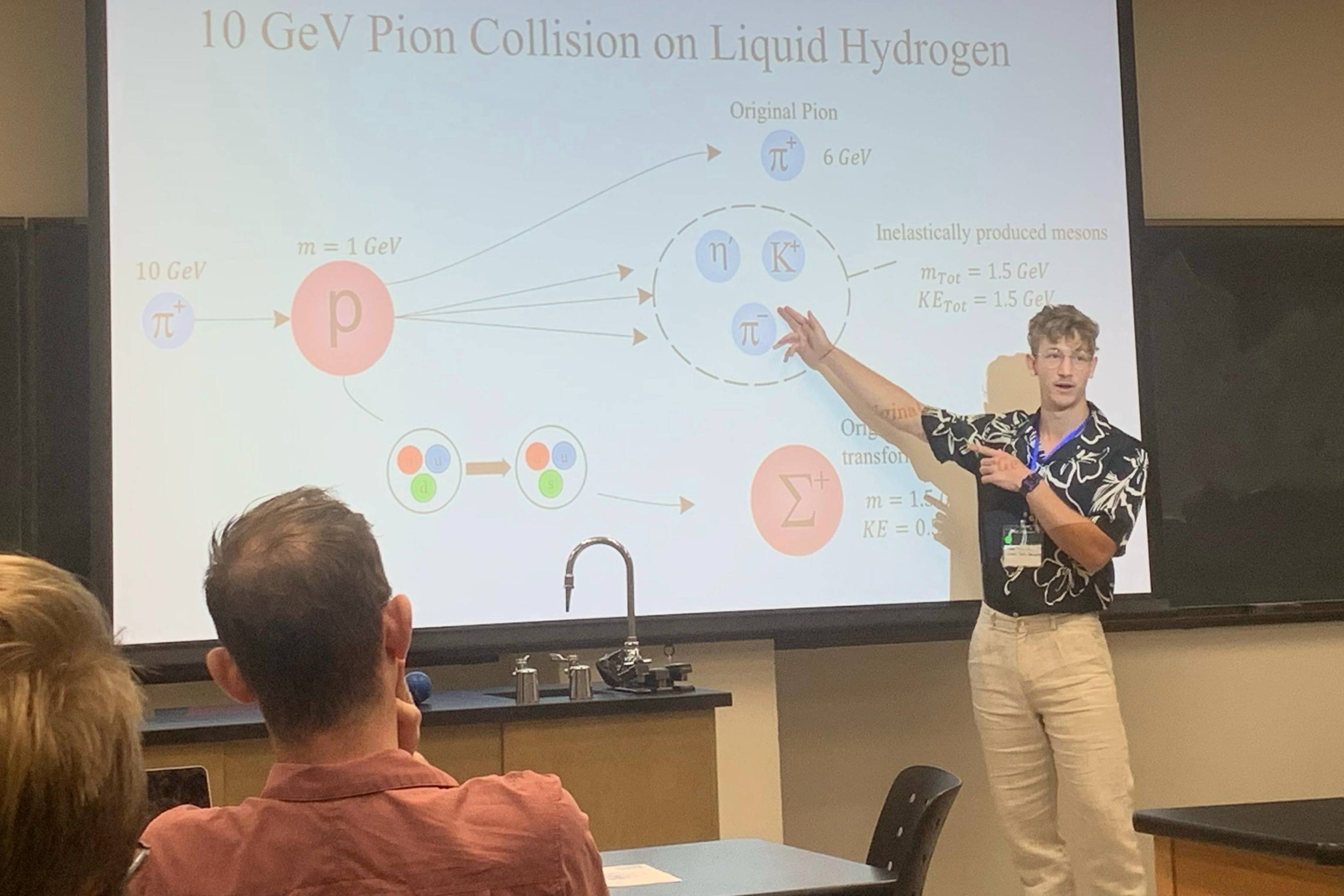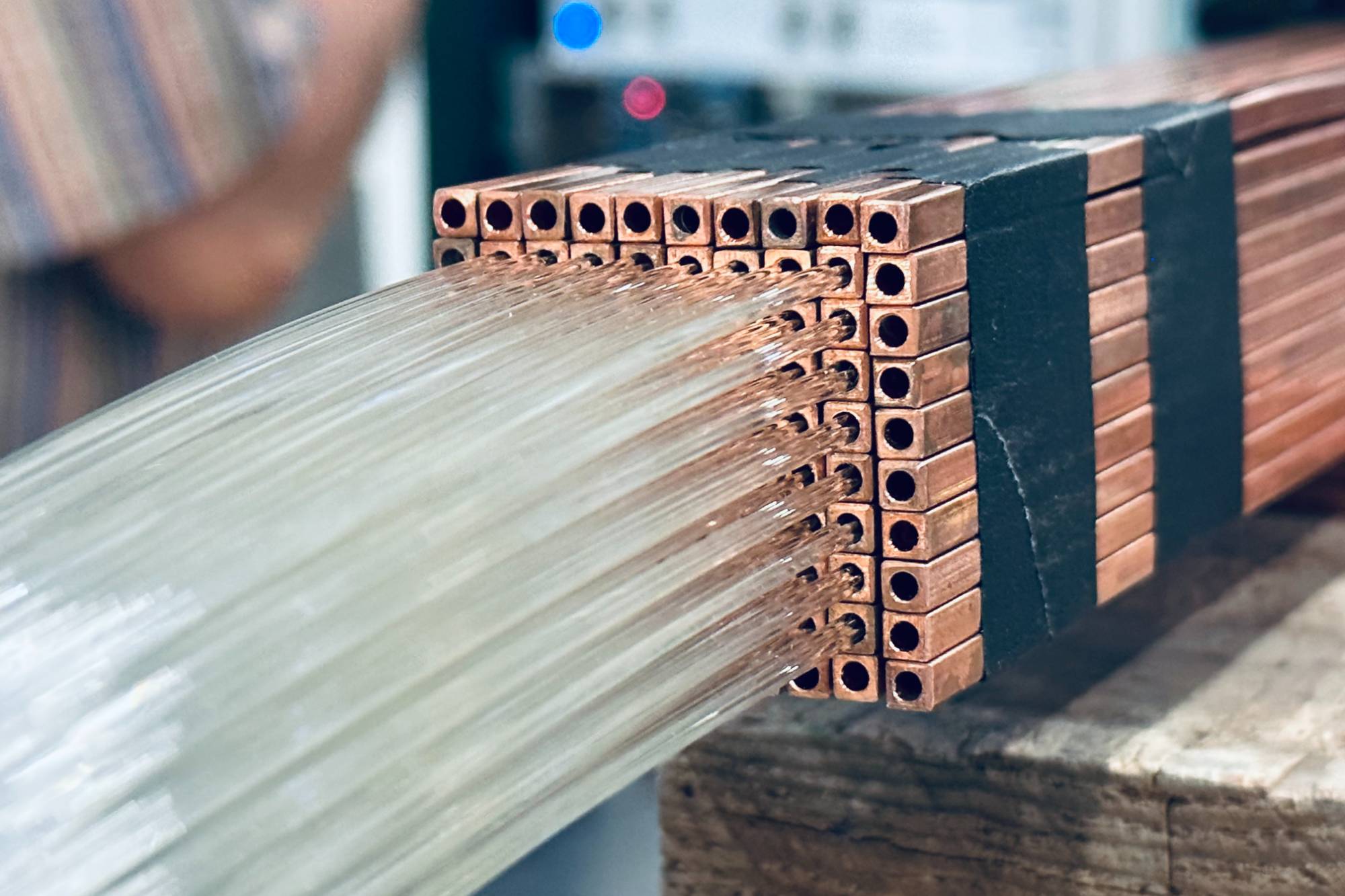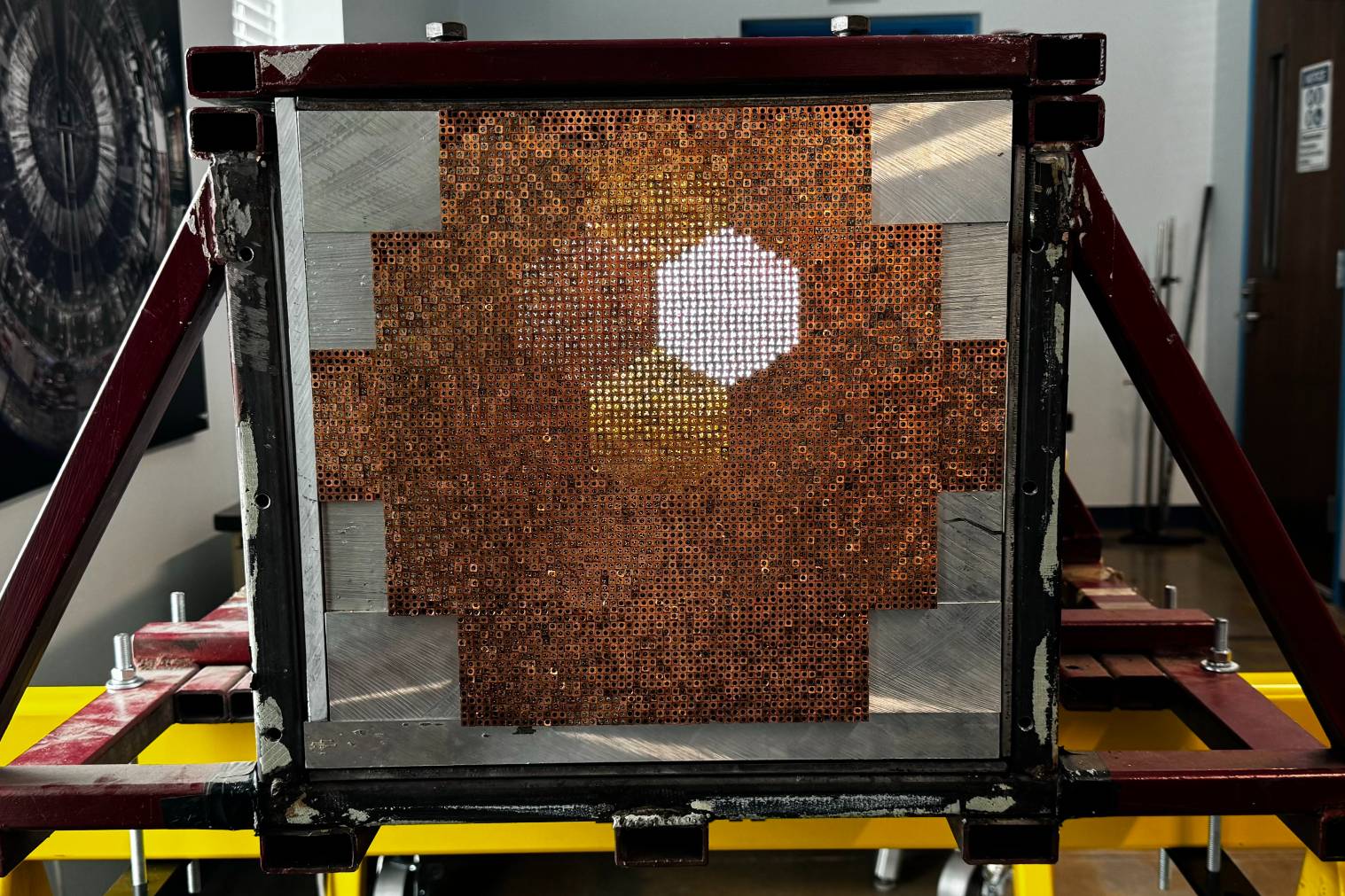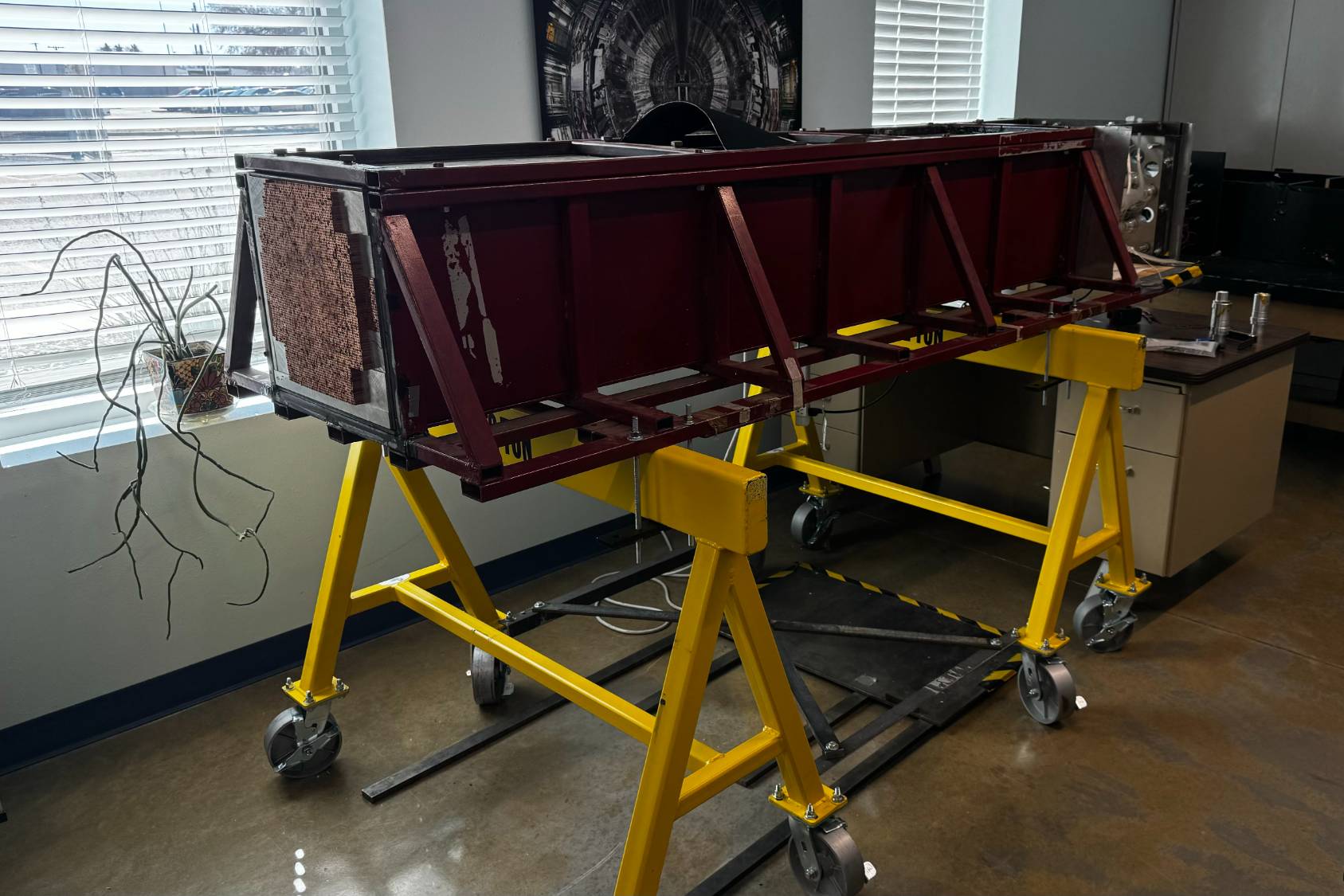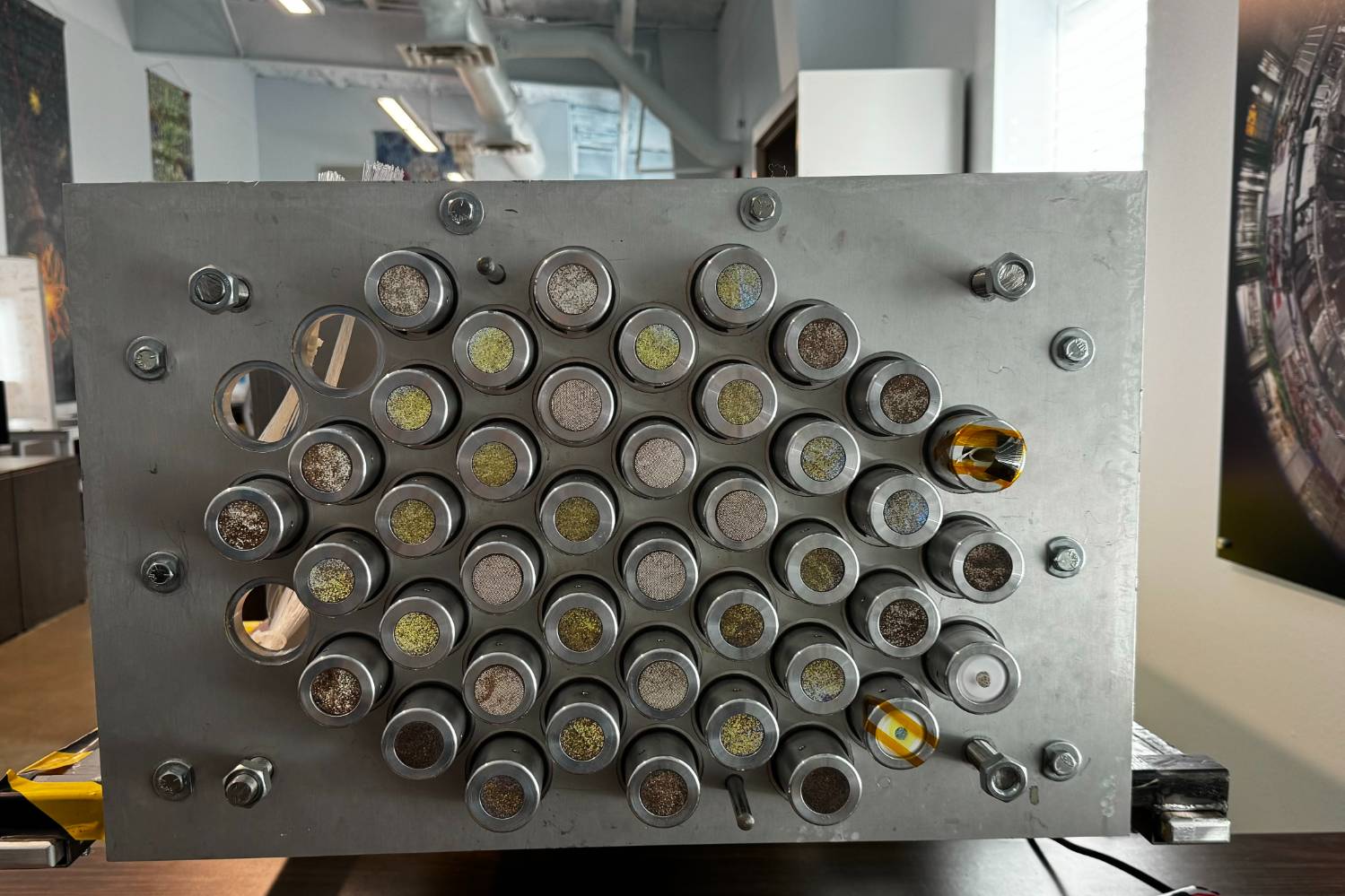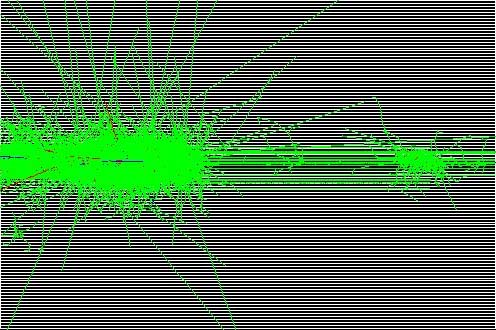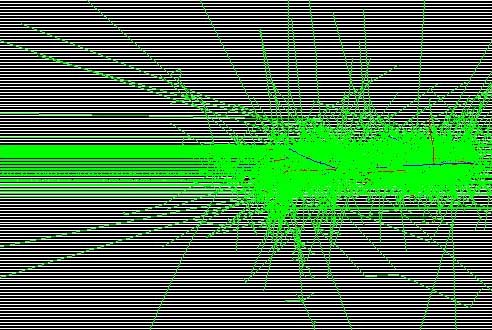CaloX- Extreme Calorimetry
How is the energy of particles that come out of collisions in colliders or in outer space measured? Calorimeters traditionally fulfill this function, and experimentalists have been making steady progress toward improved energy resolution and response in the last decade or two. A significant advance was brought about through TTU's dual-readout technique, by which two types of signals from scintillation and Cherenkov photons are recorded for the same shower. These two signals are in turn used to determine the electromagnetic fraction that tends to substantially fluctuate in hadronic showers. Measuring this fraction for each event helps improve the energy measurement as well as preserve response linearity. Different versions of this technique are now being considered for future experiments.
Another approach that has been proposed is "imaging calorimetry," which reconstructs the shower "image" by using signals from small active elements. Advances in sensor technology and image processing algorithms may lead to the creation of better tools for energy measurements, as well as insights into physics objects such as jets. Our group has decided to push the limits of this approach by simulating every particle interaction in a calorimeter and by analyzing the "images" that emerge from these showers. We call this project "extreme calorimetry," CaloX for short.
During Summer 2023 we tested new Silicon Photomultipliers at CERN to determine the possible spatial resolution in such a calorimeter. Currently, we are working on distinguishing pulses that arrive in near proximity to each other in the calorimeter. We are planning to rebuild the DREAM module with a new readout system to apply the new advancements in electronics and test the calorimeter at CERN during Summer 2024.
Advanced Particle Detector Laboratory
-
Address
TTU Advanced Particle Detector Lab, 1204 S Gilbert Dr, Building 557 Lubbock, TX 79416-2104 -
Phone
806.790.7444 -
Email
sonaina.undleeb@ttu.edu

